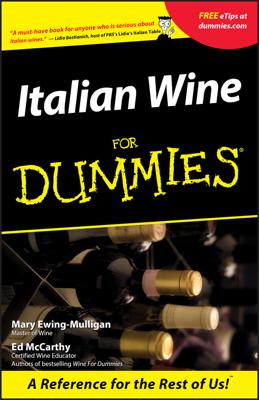Unlike American wines, most European wines are named for the region where their grapes grow rather than for the grape variety itself. Many of these European wines come from precisely the same grape varieties as American wines (like Chardonnay, Cabernet Sauvignon, Sauvignon Blanc, and so on), but they don’t say so on the label. Instead, the labels say Burgundy, Bordeaux, Sancerre, and so on: the place where those grapes grow.
Is this some nefarious plot to make wine incomprehensible to English-only wine lovers who have never visited Europe and flunked geography in school? Au contraire! The European system of naming wines is actually intended to provide more information about each wine, and more understanding of what’s in the bottle, than varietal naming does. The only catch is that to harvest this information, you have to learn something about the different regions from which the wines come.
Why name a wine after a place?
Grapes, the raw material of wine, have to grow somewhere. Depending on the type of soil, the amount of sunshine and rain, and the many other characteristics that each somewhere has, the grapes will turn out differently. If the grapes are different, the wine is different. Each wine, therefore, reflects the place where its grapes grow.
In Europe, grape growers/winemakers have had centuries to figure out which grapes grow best where. They’ve identified most of these grape-location matchups and codified them into regulations. Therefore, the name of a place where grapes are grown in Europe automatically connotes the grape (or grapes) used to make the wine of that place. The label on the bottle usually doesn’t tell you the grape (or grapes), though.
Decoding common European place-names
This information lists common place-names on wine labels, the European countries in which the places are located, and the grape varieties used to make the wines.
| Wine Name | Country | Grape Varieties |
|---|---|---|
| Beaujolais | France | Gamay |
| Bordeaux (red) | France | Cabernet Sauvignon, Merlot, Cabernet Franc, and others* |
| Bordeaux (white) | France | Sauvignon Blanc, Sémillon, Muscadelle* |
| Burgundy (red) | France | Pinot Noir |
| Burgundy (white) | France | Chardonnay |
| Chablis | France | Chardonnay |
| Champagne | France | Chardonnay, Pinot Noir, Pinot Meunier* |
| Châteauneuf-du-Pape | France | Grenache, Mourvèdre, Syrah, and others* |
| Chianti | Italy | Sangiovese, Canaiolo, and others* |
| Côtes du Rhône | France | Grenache, Mourvèdre, Carignan, and others* |
| Port (Porto) | Portugal | Touriga Nacional, Tinta Barroca, Touriga Franca, Tinta Roriz, Tinto Cão, and others* |
| Pouilly-Fuissé, Mâcon, St.-Véran | France | Chardonnay |
| Rioja (red) | Spain | Tempranillo, Grenache, and others* |
| Sancerre/Pouilly-Fumé | France | Sauvignon Blanc |
| Sauternes | France | Sémillon, Sauvignon Blanc* |
| Sherry | Spain | Palomino |
| Soave | Italy | Garganega and others* |
| Valpolicella | Italy | Corvina, Molinara, Rondinella* |
*Indicates that a blend of grapes is used to make these wines.
The terroir game
Terroir (pronounced ter-wahr) is a French word that has no direct translation in English, so wine people just use the French word, for expediency (not for snobbery). Terroir has no fixed definition; it’s a concept, and people tend to define it more broadly or more narrowly to suit their own needs. The word itself is based on the French word terre, which means soil; so some people define terroir as, simply, dirt.
But terroir is really much more complex (and complicated) than just dirt. Terroir is the combination of immutable natural factors — such as topsoil, subsoil, climate (patterns of sun, rain, wind, and so on), the slope of the hill, and altitude — that a particular vineyard site has. Chances are that no two vineyards in the entire world have precisely the same combination of these factors. So terroir is considered to be the unique combination of natural factors that a particular vineyard site has.
Terroir is the guiding principle behind the European concept that wines should be named after the place they come from. The thinking goes like this: The name of the place connotes which grapes were used to make the wine of that place (because the grapes are set by regulations), and the place influences the character of those grapes in its own unique way.
Therefore, the most accurate name that a wine can have is the name of the place where its grapes grew. It’s not some nefarious plot; it’s just a whole different way of looking at things.
Place-names on American wine labels
Wine labels from non-European countries also tell you where a wine comes from — usually by featuring the name of a place somewhere on the label. But a few differences exist between the European and non-European systems.
First of all, on an American wine label (or an Australian, Chilean, or South African label, for that matter), you have to go to some effort to find the place-name on the label. The place of origin isn’t the fundamental name of the wine (as it is for classic European wines); the grape usually is.
Second, place-names in the United States signify far less than they do in Europe. Some places indicated on a label can be meaningful because they refer to specific, well-defined areas with fairly consistent growing conditions, such as Alexander Valley in California or Red Mountain in Washington.
But other places are so large that their name communicates nothing specific —such as California, a territory that’s 30 percent larger than the entire country of Italy. Same thing for Australian wines labeled South Eastern Australia — an area only slightly smaller than France and Spain combined.

